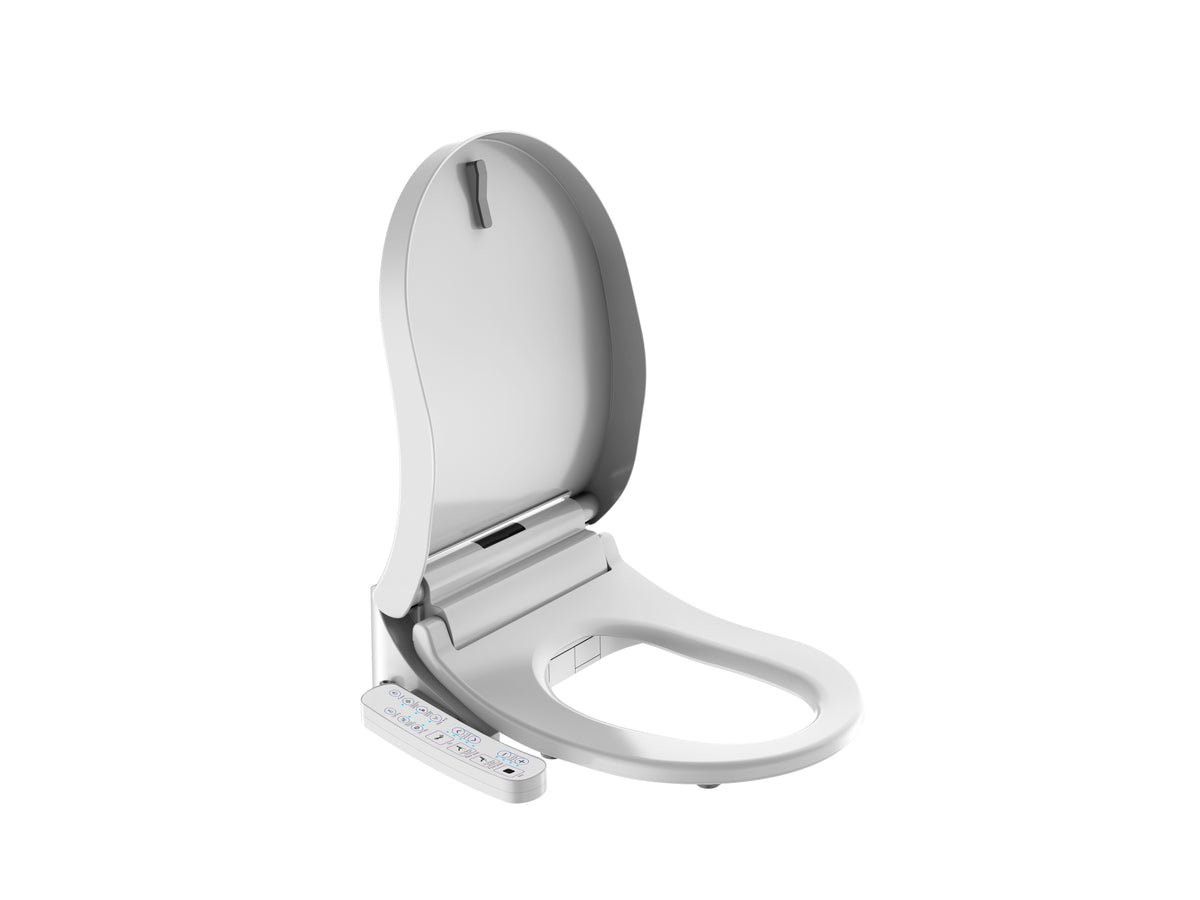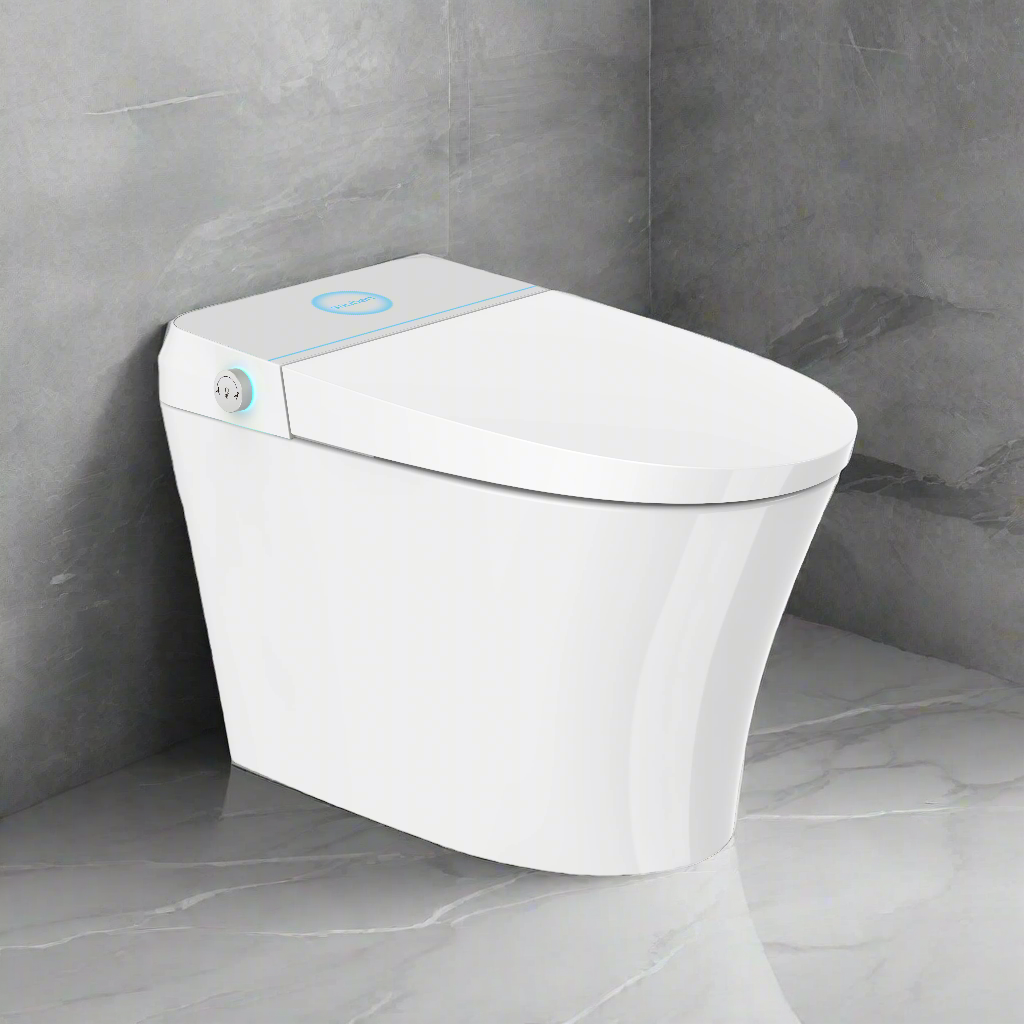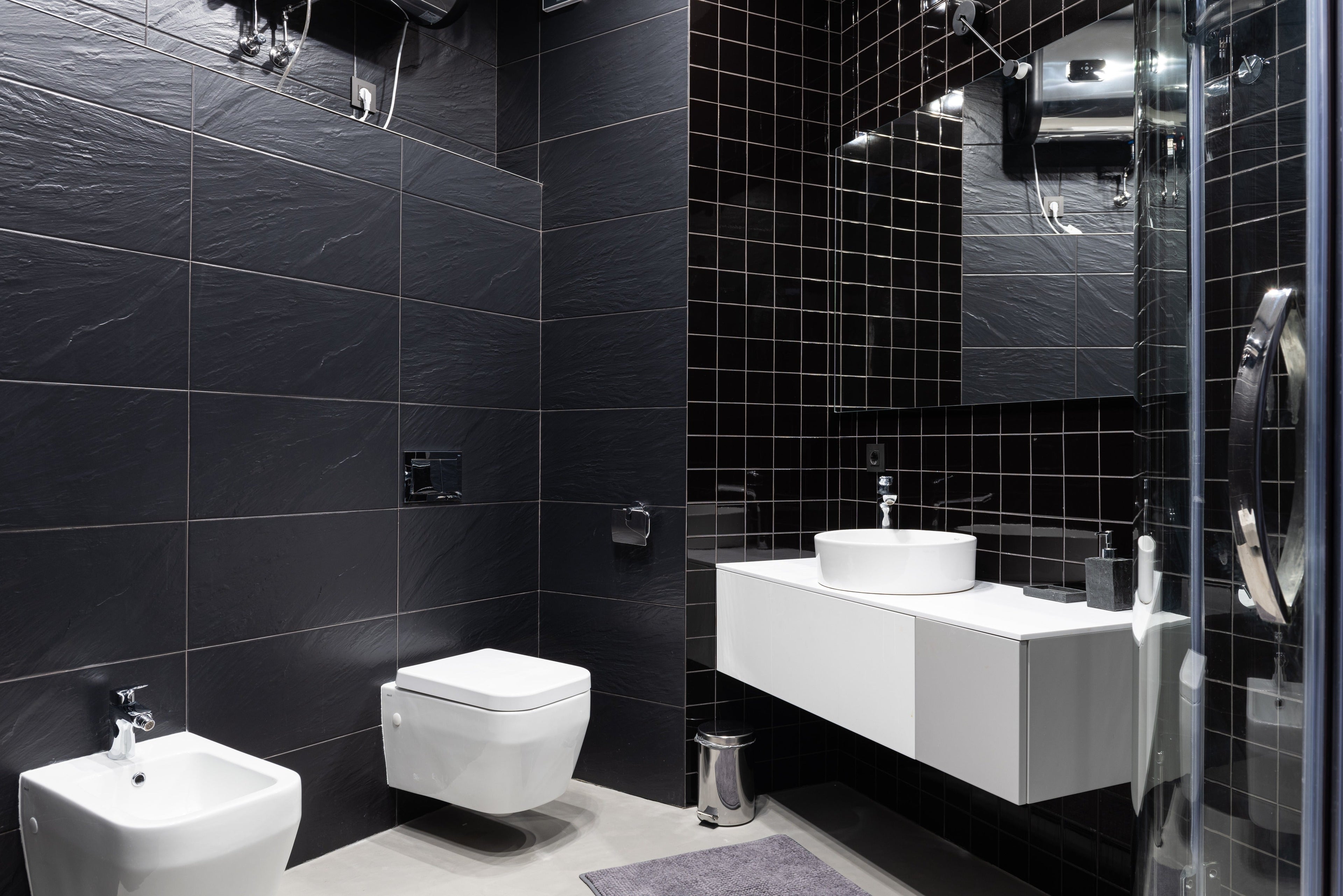Bidets are often misunderstood and come with a few misconceptions. While some of these misunderstandings have been around for years, bidet technology has advanced significantly over the last few decades, making them more accessible and practical than ever before. So let's dive in and explore 14 unbelievably common bidet misconceptions that simply aren't true.
What Is a Bidet?
A bidet is a type of plumbing fixture that has been used for centuries and is growing in popularity in modern bathrooms. It is an appliance designed to provide a more thorough cleansing than using toilet paper alone, using a stream of water to wash away waste. While historically, bidets were separated from the toilet, bidet toilet seats now provide a more convenient option and can easily be fitted onto existing toilets, allowing users to experience the benefit of bidet technology without having to replace or remodel their bathroom.

Bidet toilet seats often feature adjustable water temperatures and pressure settings and specialised nozzle designs for optimal performance, making it easier to find a bidet solution that fits your needs.
1. Are Bidets Unhygienic?
The bidet has been used in many cultures for centuries, but some people wonder whether it is a hygienic way of cleaning. After all, most Brits only use toilet paper to clean up after using the bathroom, so a thorough rinsing can seem unusual. However, numerous studies have demonstrated that bidets are profoundly hygienic tools, removing bacteria and other microbes more effectively than toilet paper alone.
In fact, because they are designed to release water at a steadier rate and temperature than you'd get by simply turning on the faucet, bidets can offer a better final rinse than traditional hand-washing alone but also lessen exposure to germs while using the bathroom. This fact, relative affordability, and ease of installation make sanitary reasons enough to consider installing a bidet in your home.
What do doctors say about bidets?
Doctors have long praised the use of bidets in medical settings and for personal hygiene. A bidet helps to keep skin clean and free from bacteria, promoting a healthy environment for everyone. Not only that, but regular use of a bidet can also lead to fewer doctor visits caused by common ailments like urinary tract infections.
Additionally, since water use increases with bidets, it typically leads to better personal hygiene overall, which is especially helpful for patients with limited mobility or those unable to reach areas with traditional toilet paper. In short, bidets are an effective way to aid in personal health and hygiene and stress on healthcare systems when used responsibly.
2. Do Bidets Take Up Too Much Space?
While bidets may take up more physical space in the bathroom than a roll of toilet paper, their benefits may justify their larger footprint. Bidets are much better at reducing the need for paper, as they allow users to target and clean specific areas of their bodies. With the development of smart toilet seats, it's no longer necessary to install a separate bidet - which means installing a bidet device doesn't have to take up extra space in your bathroom.

3. Are Bidets Difficult to Install?
Installing a bidet can seem intimidating, especially for those who are not used to complex plumbing projects. However, installing one is not as difficult as many would expect. Depending on the type of bidet and the available connections, it may be as simple as hooking up a few hoses and pieces of hardware. For those with existing plumbing connections, it is often easy to simply attach an existing toilet seat to the back of the sink or tub and hook it up to your current water supply lines.

4. Does Everyone Use a Bidet the Same Way?
Many older adults in cultures around the world use bidets as a more sanitary option for their daily cleansing habits. However, it is not just elderly people that are taking advantage of this device - nearly everyone has started to recognise its advantages. The most common way of using a bidet is to direct water to the posterior region. However, some prefer turning on different jets to switch up the pressure and direct the water flow differently.
In any case, individuals have taken to using bidets in many ways; some opt for using only one jet, while others create a unique spa-like experience with multiple jets and adjustable positions. It is clear that there is no single way to use a bidet and that cultures worldwide find different ways to take advantage of its practicality.
5. Will Using a Bidet Mean I Have to Give Up My Toilet Paper Habit?
For years using toilet paper has been the main way to clean oneself when using the restroom, but using a bidet is becoming increasingly popular. However, understanding the differences between toilet paper and a bidet is essential; although using a bidet eliminates the need for toilet paper, it does not necessarily mean that you have to give up on toilet paper completely.

Bidets are designed in such a way that they can be used as an addition to wiping with toilet paper. Bidets are best used as extra support, increasing comfort and hygiene in the bathroom. Using a combination of both tools means enjoying the same experience that comes with using toilet tissue while enjoying additional benefits associated with using a bidet.
6. Do All Homes Have Plumbing for a Bidet?
Bidets are a wonderful way to maintain good hygiene in one's home, but not all homes have the necessary plumbing for a bidet. While many modern bathrooms are being built to accommodate them, plenty of households still lack the infrastructure needed. Fortunately, several easy-to-install options are available on the market should one want to get a bidet without completely remodelling their bathroom.
These days, you can find power and non-power models ranging from simple units that attach directly to your existing toilet seat to more integrated ones that fit neatly between your toilet and wall. For any home looking for a convenient and hygienic solution for their bathroom needs, look no further than bidets – even when you don't have plumbing ready!
7. Aren't Most People Not Used to Using a Bidet?
Even though the bidet is a centuries-old technology, it's still something that many don't use in modern society. Surprisingly, despite living in one of the most developed countries in the world, bidets are still uncommon. This makes sense since bidets aren't usually installed from the factory, nor are they something that people generally think to add when renovating bathrooms.

Additionally, those who don't have much knowledge about bathroom fixtures may not even be aware of what a bidet could do for them. Despite this lack of knowledge and familiarity with modern bidets, it is fascinating how quickly people adapt to something new if they’re shown the value it provides them. In no time at all, those who don’t use bidets can become masters of this unique technology!
8. Will the Water Pressure from a Bidet Cause Injury?
The answer as to whether or not a bidet can cause injury largely depends on the water pressure set by the user. Most modern bidets are designed with built-in water pressure regulators that allow users to choose an appropriate stream strength, depending on their own preference and comfort level. As long as the water pressure selected is suitable for the user's needs, there should be no concern about the bidet causing injury.
9. Can a Bidet Help With Medical Issues?
With the health benefits of bidets becoming better known, more people are considering whether one can help relieve their medical issues. From preventing rashes and infections with greater cleanliness of intimate areas to decreasing common health problems such as constipation, bidets can be a healthier alternative to toilet paper. In addition, using a bidet can help ease inflammation caused by haemorrhoids and other health issues.

10. How Often Should I Clean and Maintain My Bidet Device?
Cleaning and maintaining your bidet device regularly is essential to ensure that it works properly and lasts for years to come. Doing so is also important for safety and hygiene purposes, as any debris or waste in the bidet can be hazardous. In general, you should aim to clean the inside of your bidet with soap and warm water at least once a month, inspecting hoses to ensure they are not clogged with mineral deposits or hard water buildup.
11. Do I Need Extra Soap or Cleaners When Using A Bidet?
Bidets are quickly becoming a popular addition to more and more bathrooms as people realise the convenience and hygienic benefits they offer. But when deciding which cleaning products to use in combination with a bidet, many wonder if additional soaps or cleaners are needed. The simple answer is no; most modern bidets provide perfectly adequate water pressure, temperature control and cleansing options without requiring extra cleaning agents.

12. Are There Different Types of Bidets?
A bidet is the ultimate solution for upgrading their bathroom experience. A bidet is a plumbing fixture used for personal hygiene, usually positioned near the toilet and often cheaper than other bath and shower systems. There are indeed different styles and types of bidets to choose from, depending on your lifestyle and needs; these range from self-contained units with features such as a toilet seat cover, warm-water wash system, air dryer, and deodoriser; to built-in fixtures typically found in luxury homes with more options like customisable warm water control.
13. Is it Expensive to Use A Bidet Every Day?
Using a bidet daily is not necessarily expensive, but there is an upfront cost to consider. The most economical option may be an inexpensive hand-held or attached bidet nozzle, which can easily attach to your existing toilet seat. These require no installation, and various models are available at various price points. For those interested in a hands-free experience, installing a larger unit in the bathroom is more expensive.

However, this cost may be offset by the potential savings associated with using fewer paper towels and toilet paper since you no longer need as much to clean properly. Ultimately, whichever route you choose could end up being an economically friendly way of keeping yourself tidy while saving trees in the process.
14. Are Bidets Worse for the Environment?
A bidet is a powerful tool for bettering the environment that should not be overlooked. It can save an average family 18,000 to 26,000 sheets of toilet paper annually and easily pays for itself within about half a year. Bidets also ensure better hygiene, providing better cleaning than relying on toilet paper alone.
Furthermore, bidets require far less water than regular toilets and can even use recycled material or rainwater if attached to the appropriate plumbing system. There are also better alternatives to the electric varieties that use little or no electricity and thus leave a significantly lighter footprint on the environment. For all these reasons, it is clear that bidets are better for the environment than traditional sanitation methods.
Conclusion
If you’re on the fence about whether or not a bidet is right for your home, hopefully, this article has helped clear up some of the most common misconceptions. While it’s true that bidets have been around for centuries, they are becoming increasingly popular as more and more people learn about their many benefits.
From saving money on toilet paper to reducing your carbon footprint, there are plenty of reasons to consider switching to a bidet. If you have any further questions about bidets or would like help finding the perfect model for your home, our friendly and knowledgeable team would be happy to assist you.
Enjoy the most comfortable bathroom experience possible with a bidet toilet seat from our British design team, which include a bidet, dryer and remote controls. Find out more about the health benefits of bidets.


